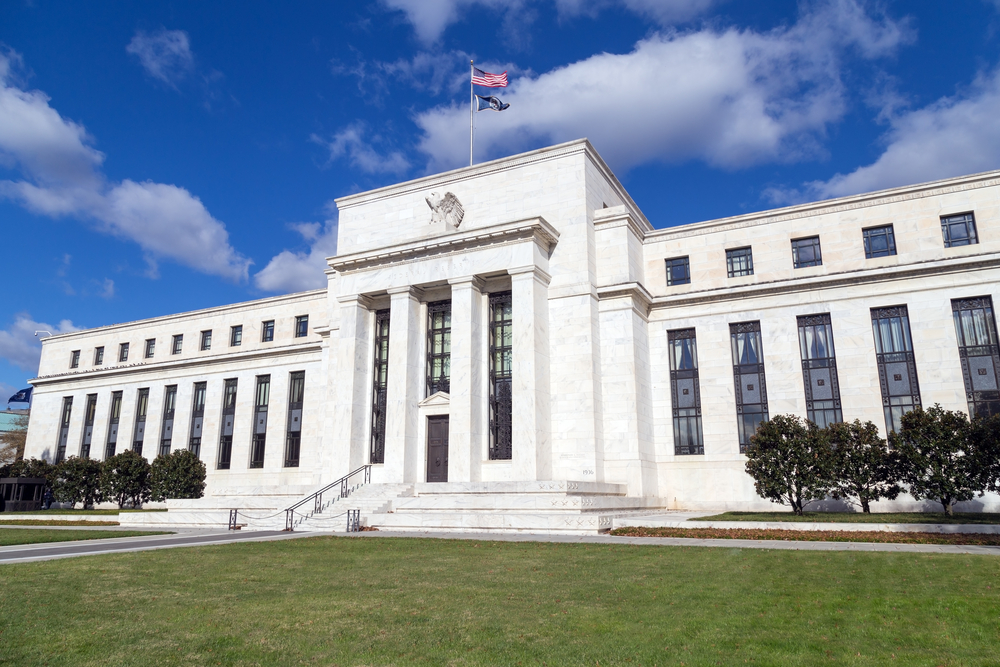U.S. Economic Growth is not Exactly Living up to Forecasts

Please note that we are not authorised to provide any investment advice. The content on this page is for information purposes only.
As I read the news and watch the markets, I am struck by the yawning difference between what is going on with the economy and what is happening with equities.
I know the worn out arguments.
People are buying stocks because they do not have many choices. That’s fair, to some extent. The return on stocks (dividends, expected earnings growth) is higher than the interest paid on bonds.
As I read the news and watch the markets, I am struck by the yawning difference between what is going on with the economy and what is happening with equities.
I know the worn out arguments.
People are buying stocks because they do not have many choices. That’s fair, to some extent. The return on stocks (dividends, expected earnings growth) is higher than the interest paid on bonds.
Then there is this one: Foreign investors moving to U.S. dollar-denominated holdings are driving up prices. And my favorite: Stocks will keep going up because… they have been going up. I am not sure how that makes sense, but I guess it follows some thread of logic. There is some truth in each of these, but we need to keep one overriding factor in mind.
For years, the silver lining has been growth in the equity markets. Every time we have discussed weakness in other parts of the economy, someone has always yelled, “But look at the markets!” Clearly, it is true. Many people have made tidy sums over the past six years through investments… even if their paychecks have remained modest. However, the silver lining is always in contrast to the cloud, and in recent years, it seems as if people have forgotten the cloud exists. Not only is it still with us, but it is growing more ominous by the day.
First quarter gross domestic product (GDP) was just released. For the first three months of the year, the U.S. economy grew at an annual rate of 0.2%. Note that this is the annual rate. The actual rate for just the quarter (one fourth of the year) was 0.05%, which is about as close to zero as you can get and still be positive.
This level of growth comes on the heels of our Fed printing almost $4 trillion, our mortgage agencies allowing home loans with a mere 3% down while conforming mortgage rates sit below 4%, and new car loans charging less than 3% interest.
With so many forces propelling the economy forward, we should be growing at 3% to 4% per year, not struggling to understand why we are sitting close to zero. Yet, here we are, looking forward to another year of subpar growth — and it is nothing new.
The Federal Reserve estimates GDP growth at every regular meeting, and they have been woefully wrong in their assessment for half a decade. In late 2010, just as they launched the second round of quantitative easing (QE), the Fed projected 2011 growth at 3.3%, 2012 at 4%, and 2013 at 4% as well.
It did not work out that way.
GDP grew 1.6% in 2011, just a smidge below the Fed’s 3.3% expectation. Still, the group was undeterred. In January 2012, they estimated growth at 2.5% for the year (lowering their previous estimate by almost half), thought 2013 would grow by 3.0% (a point less than previously thought), and pegged 2014 at 3.7% (just under the prior estimate). Their 2012 figure of 2.5% was close. The economy grew by 2.3% that year. However, subsequent years failed to live up to the lowered expectations. GDP grew 2.2% in 2013, and 2.4% last year.
Notice a pattern?
No matter what we have done to encourage lending and borrowing, economic growth remains anemic. This cloud is starting to blot out the bright light of the equity markets, which appear to have recently noticed that, not everything’s sunshine and roses in the economy. On a recent portfolio investment call at Dent Research, as usual we polled everyone for their opinion on the markets. The group includes Harry Dent, myself, Charles Sizemore, Lance Gaitan, Ben Benoy, John Del Vecchio, and usually Adam O’Dell, but he was on vacation that day.
As the rest of us went through our notes, I was struck by a common theme. We all noted that the markets continued to advance, but none of us could tell why. At one point, I asked everyone for a single answer on what could propel the markets higher. The only response was that the Fed could keep holding interest rates near zero a bit longer in the face of bad economic news.
That is probably the best commentary of all on this cloud — the only positive is that the economy is so weak, even with all the stimulus and booster initiatives, that the Fed might not move short-term rates off zero for another four to six months.
Pardon me if I do not break out the champagne.
With six years of strong equity growth on the books without a significant correction, and the U.S. still suffering with weak growth, the chance of a break in the markets seems to grow with each passing day. We have reiterated this point many times, but it bears repeating — be cautious. Now is not the time for added risk or speculation. If you employ an investment process, pay close attention to your stops and sell signals.
If you do not use a system, take the time to review your holdings to see if any pruning of gains is in order. When the current cloud starts to rain, it could quickly turn into a flood.
Hey, Fed – Where’s Our Silver Lining? is republished with permission from Harry Dent Jr.




